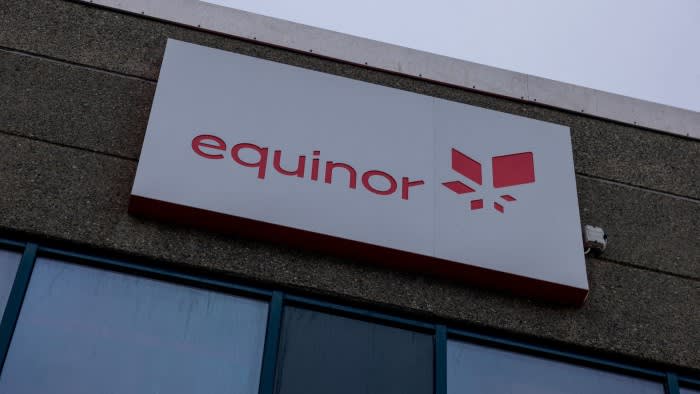Unlock the Editor’s Digest for free
Roula Khalaf, Editor of the FT, selects her favourite stories in this weekly newsletter.
Finding common threads in the European oil majors’ energy transition strategies is not easy.
There is still a somewhat experimental approach across the sector: Eni is building satellite businesses it can sell down, or possibly float. TotalEnergies is growing electricity generation and liquefied natural gas production. BP has pushed into areas such as EV charging — and is reportedly preparing to abandon its 2030 target to cut oil and gas output.
This week, Equinor added another move to the mix. It has built a 9.8 per cent stake in offshore wind developer Ørsted, becoming its second-largest shareholder behind the Danish government. It should prove a value-creating addition to the strategic sorting hat. But it is not something others will necessarily ape.
Equinor was a relatively early mover in offshore wind. It already has an operational portfolio of about 1GW, and 2GW under construction. In recent years, though, it has often been priced out of European auctions for seabed leases. It has cancelled some early-stage projects as the industry continues to grapple with higher costs.
Given its recent troubles in the US, Ørsted might not look the best of targets. But it has a decent portfolio of 10.4GW of operational renewables assets, plus more under construction. Even if you assumed Equinor paid 10 per cent of Ørsted’s roughly $25bn market capitalisation as of last Friday — the final trading day before the announcement — it looks as though Equinor is getting a decent discount to access a slice of those assets. The total net asset value of Ørsted’s portfolio is about $30bn, estimates Bank of America’s Christopher Kuplent.
Of course, investors may wonder why Equinor does not return more money and let them decide if they want exposure to a large renewables developer. That is an argument oil and gas CEOs will continue to have.
In its defence, Equinor can point to plenty of cash returns already. It has promised total distributions in 2024 of $14bn, including buybacks and dividends — equivalent to nearly a fifth of its market cap. The Ørsted deal should not alter future planned returns. Equinor can easily shoulder the estimated 5 per cent increase in its net debt ratio that Bernstein expects will follow the deal.
This is unlikely to start a frenzy of renewables stake buying across the industry, however. Not all have the same balance sheet strength. BP, for instance, has faced questions over whether it can meet its $7bn annual share buyback from 2025 onwards.
If Equinor’s latest move is suggestive of any theme, it’s that the European oil majors are still struggling to find a clear path to 2050.
nathalie.thomas@ft.com
https://www.ft.com/content/a05cbe31-a233-4f09-aaab-a91e8341edd1


